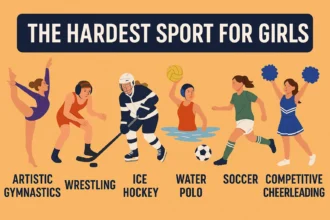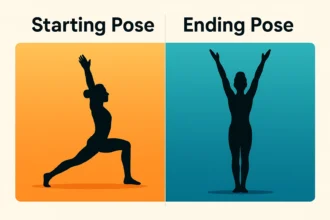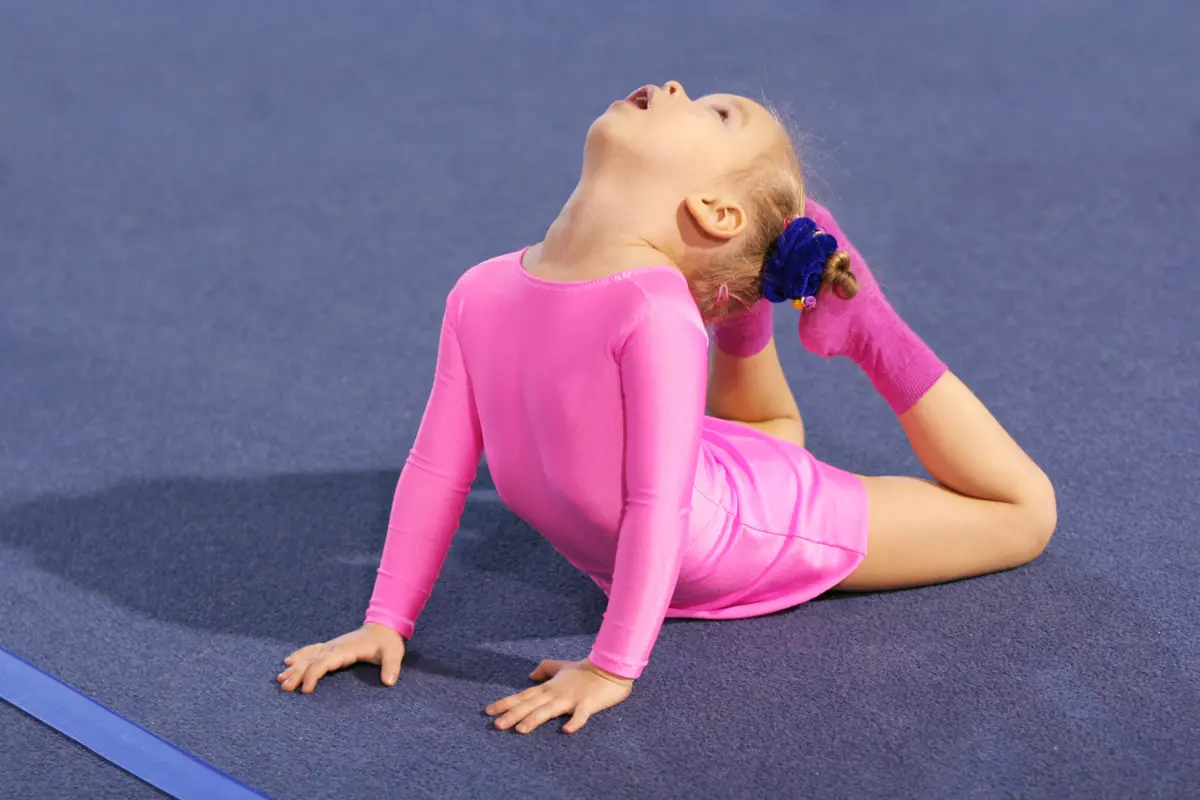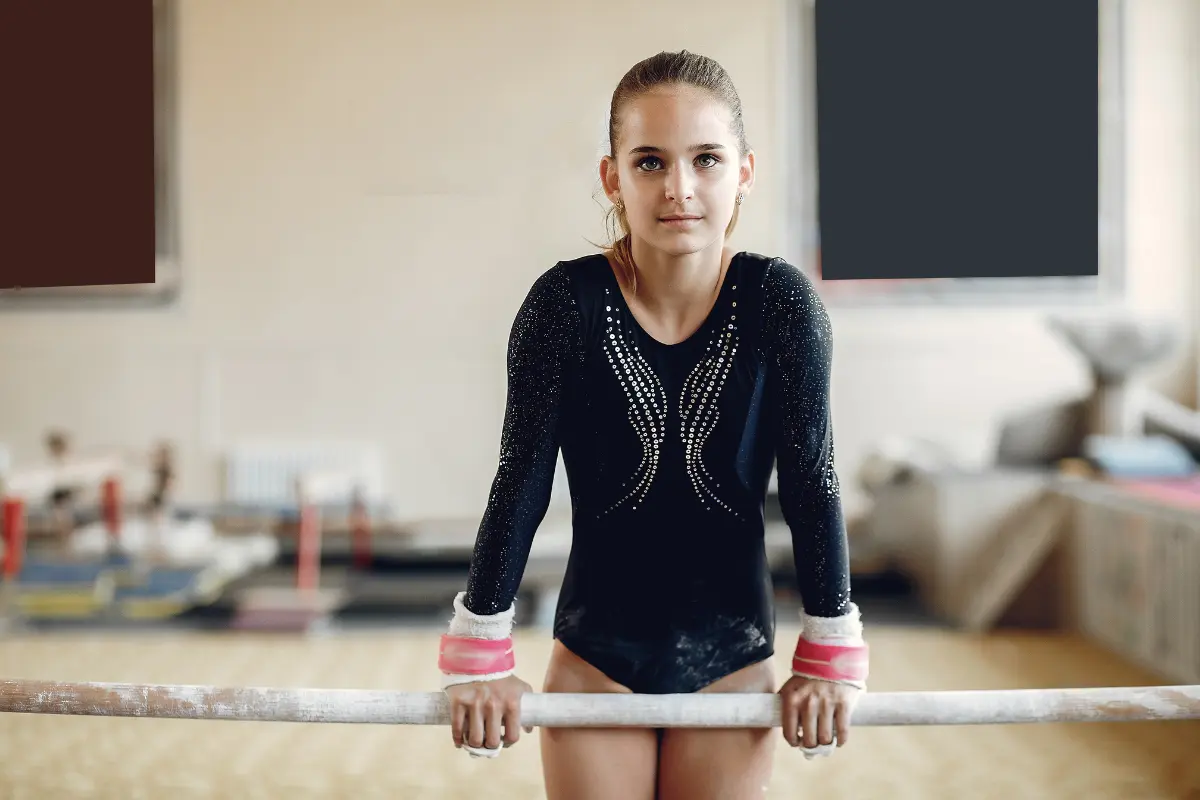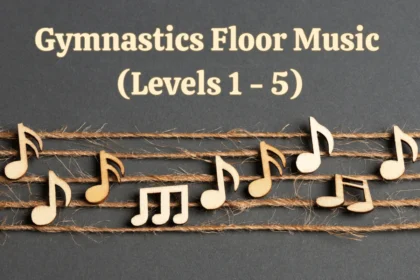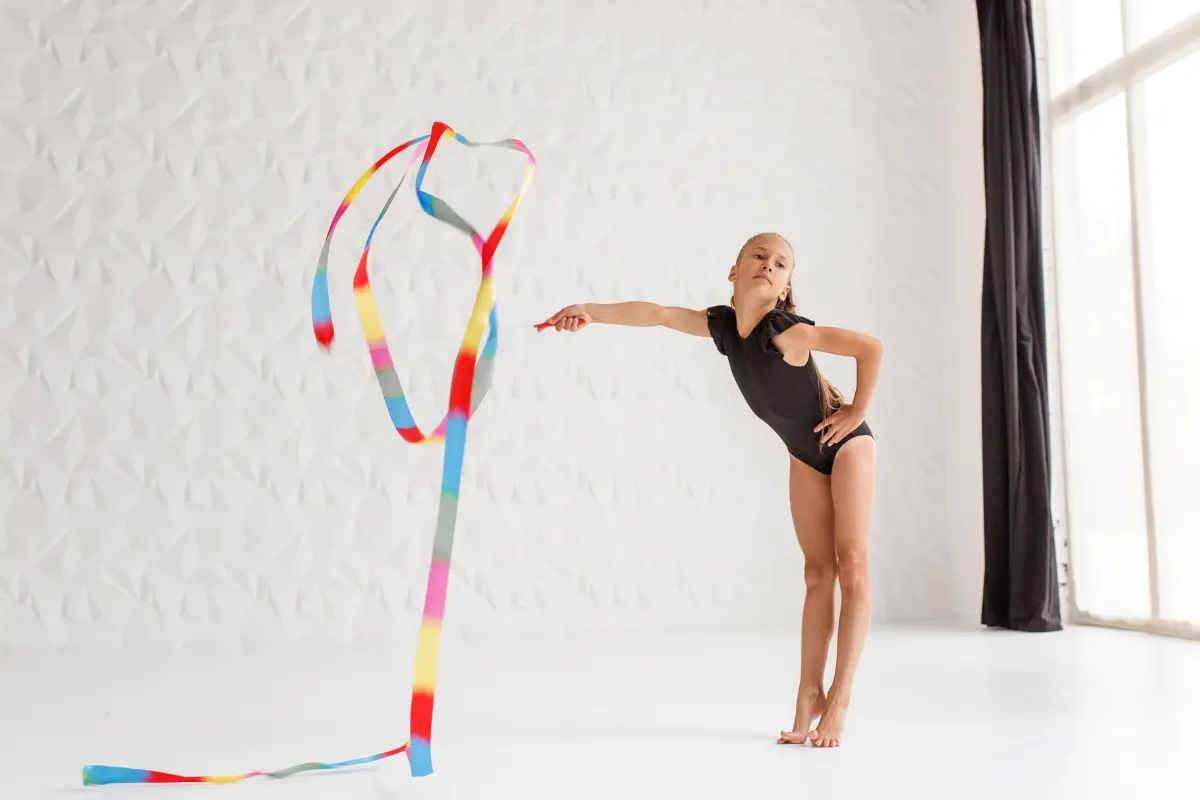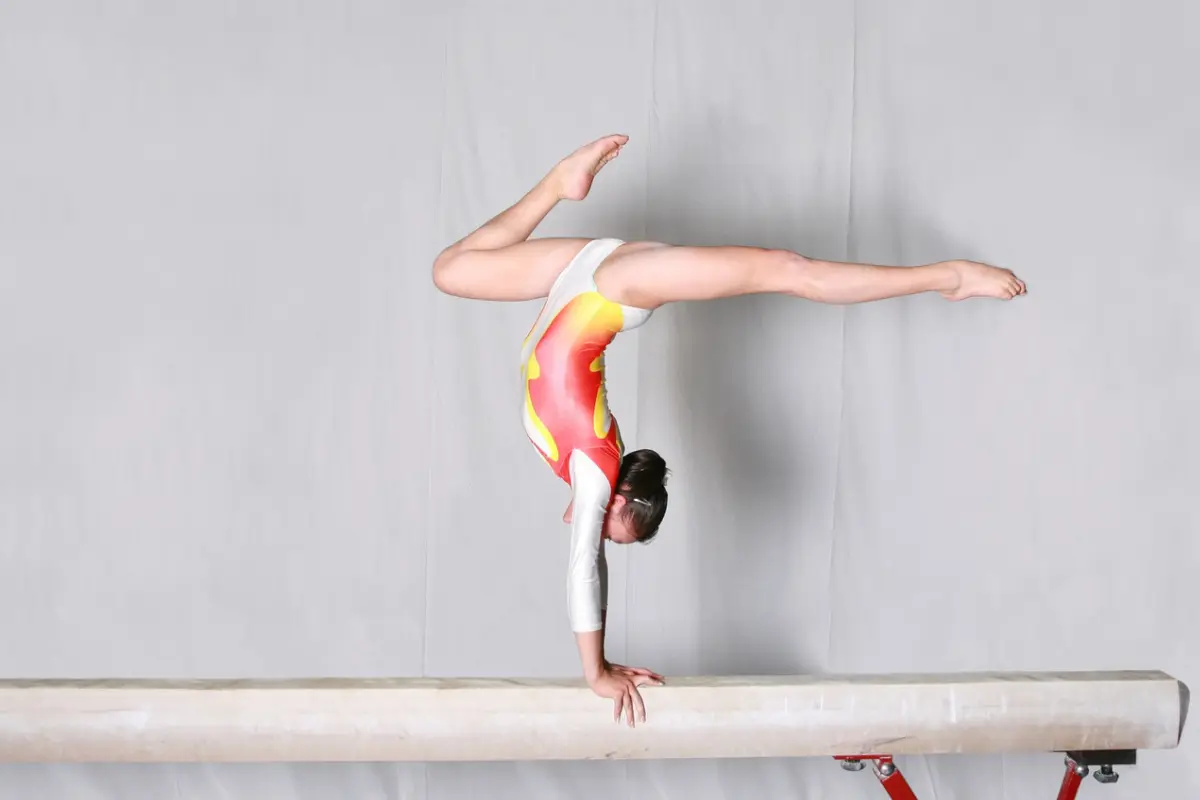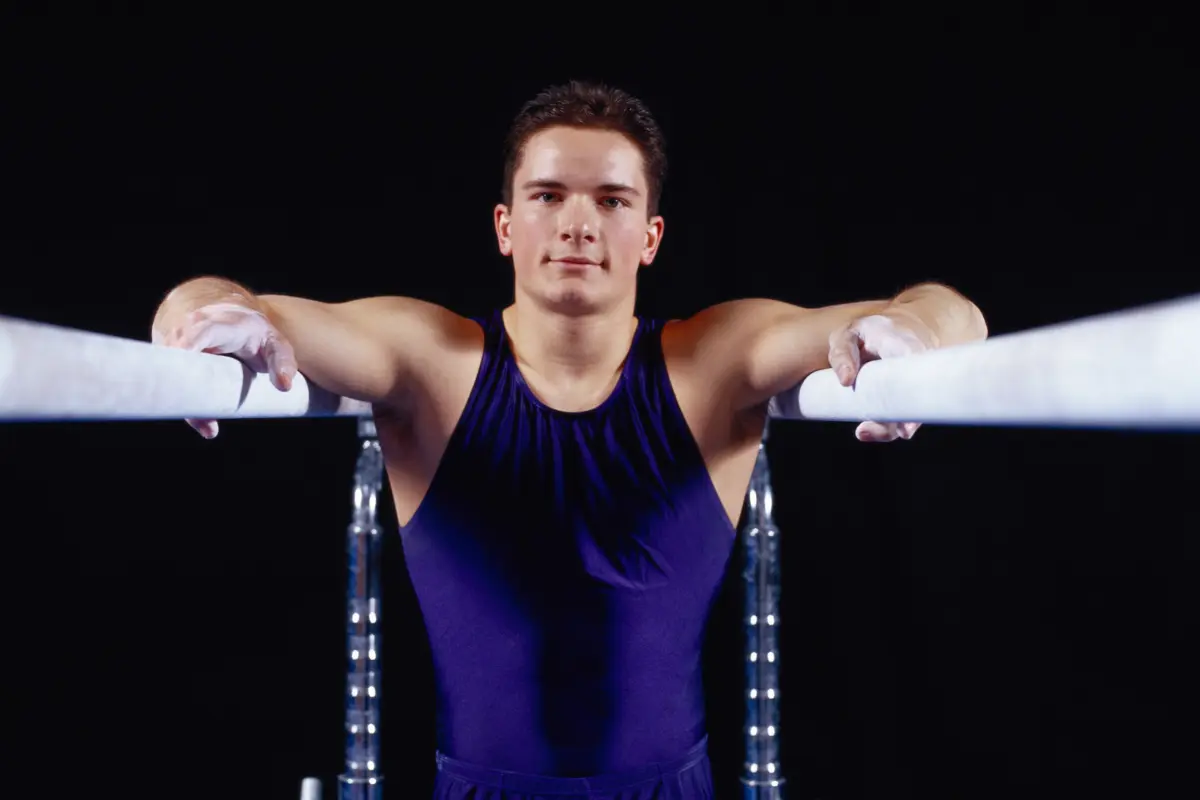Gymnastics is a dynamic and challenging sport that demands strength, flexibility, balance, and precision. For children and young athletes, starting gymnastics at the right age is crucial to developing the foundational skills needed to excel in the sport.
But when is the best age to start gymnastics? The answer depends on various factors, including the type of gymnastics (recreational vs. competitive), the child’s developmental stage, and their specific goals.
Here, we outline a timeline for developing gymnastics skills, offering guidance for parents and young athletes on the best ages to begin training.
Starting Gymnastics: Early Childhood (Ages 2-5)
While competitive gymnastics typically starts at a later age, recreational gymnastics can be introduced as early as age 2.
At this stage, children are primarily focused on building basic motor skills, coordination, and body awareness. Classes for younger children are generally fun, non-competitive, and designed to help them develop a love for movement through games, music, and simple routines.
Key Skills Developed:
- Balance and coordination: Early gymnastics classes help children develop fundamental balance and coordination through activities like balancing on beams and basic floor exercises.
- Flexibility: Gentle stretching routines are introduced, helping children develop flexibility at a young age.
- Motor skills: Tumbling, jumping, and running exercises help improve gross motor skills.
- Spatial awareness: Children learn how to control their bodies in space, which is important for all forms of gymnastics.
While not focused on advanced skills at this stage, early exposure to gymnastics can help foster confidence and enthusiasm for the sport, providing a solid foundation for future learning.
Building Basic Gymnastics Skills (Ages 5-7)
As children reach ages 5 to 7, they can begin to focus more on fundamental gymnastics skills. At this point, their motor skills are more developed, and they have better strength and flexibility than younger children.
Gymnastics classes for this age group introduce more structured routines, teaching basic gymnastics movements such as forward rolls, handstands, and cartwheels.
Key Skills Developed:
- Basic Tumbling: At this stage, children learn basic tumbling skills, including rolls, cartwheels, and handstands.
- Strength and Conditioning: Bodyweight exercises, such as push-ups, sit-ups, and basic jumps, are incorporated to help children develop strength.
- Flexibility: Stretching becomes a regular part of the routine, focusing on hamstrings, quadriceps, and back flexibility.
- Balance and Coordination: Children refine their balance on beams and improve coordination through simple floor exercises.
This period is key for setting a strong foundation. Children who begin gymnastics during these years often transition smoothly into more advanced training as they grow older.
Introduction to Competitive Gymnastics (Ages 7-10)
For those who show significant interest and aptitude, ages 7 to 10 is the period when competitive gymnastics can begin in earnest.
Children in this age range are typically introduced to the formal levels of gymnastics training, with a focus on mastering the skills required for their level and building the strength and stamina needed for competitive routines. At this stage, children begin to learn the specifics of each apparatus (floor, beam, bars, and vault) in artistic gymnastics.
Key Skills Developed:
- Skill Refinement: Athletes at this age start mastering more advanced skills like back handsprings, front handsprings, and balance beam routines.
- Technique: Instructors focus heavily on improving the precision of movements, such as perfecting form during a handstand or vault approach.
- Strength and Endurance: Strength training becomes more advanced, with an emphasis on core, upper body, and leg strength.
- Flexibility: Increased flexibility training is integrated to prepare athletes for more difficult skills and to prevent injury.
By ages 9 or 10, many children start competing at the local level in meets, which may be a mix of compulsory and optional routines. These competitions are designed to assess technical proficiency and routine execution.
Refining Technique and Increasing Intensity (Ages 10-13)
As children move into the pre-teen years (ages 10-13), they begin to fine-tune their gymnastics skills and conditioning. For competitive gymnasts, this is the stage where more specialized training is introduced.
Athletes focus on mastering complex skills and improving their performance under pressure. During this period, gymnasts also work to perfect the artistic side of gymnastics, such as their presentation, choreography, and expression during routines.
Key Skills Developed:
- Advanced Tumbling: Skills like back handsprings, layouts, and twisting are introduced for floor exercises.
- Beam and Bar Work: Gymnasts develop a deeper understanding of apparatus-specific techniques and begin to perform more complex skills, such as back handsprings and dismounts on the balance beam and release moves on bars.
- Routine Composition: Athletes learn how to put together complex, choreographed routines that incorporate a variety of skills on all apparatuses.
- Strength and Conditioning: Intense strength and conditioning programs continue, focusing on enhancing overall athleticism and reducing injury risks.
Athletes who start gymnastics at this age may still be able to excel, but they may face a steeper learning curve than children who start at a younger age. However, with dedication and hard work, they can still achieve a high level of performance.
Teenagers and Elite Training (Ages 13 and Up)
While many gymnasts begin their competitive careers in their younger years, it’s still possible for teens to start gymnastics and excel, especially if they have a solid athletic background or have trained in a related sport (e.g., dance, cheerleading, or acrobatics).
However, teens who begin gymnastics later than the typical age range for competitive gymnasts face certain challenges. They may struggle with some of the more advanced skills and need to catch up in terms of strength, flexibility, and conditioning.
Key Skills Developed:
- Advanced Skills: Athletes refine advanced gymnastics skills such as high-level tumbling passes, complex bar routines, and challenging balance beam combinations.
- Mental Toughness: Competitive gymnasts at this age are introduced to the mental aspects of the sport, including focusing during routines, coping with competition pressure, and overcoming performance anxiety.
- Injury Prevention: At this stage, preventing injuries becomes a key focus, and gymnasts learn the importance of proper recovery, nutrition, and rest.
- Performance at Elite Levels: Teen gymnasts may begin training at the national or elite level, competing in high-level competitions such as state championships, regional competitions, or even national meets.
For athletes who start gymnastics later in their teen years, their development may follow a more accelerated path. However, it is important to note that competitive gymnastics at the highest levels often requires years of early training, so starting later may limit their potential for reaching the elite ranks.
Is There a ‘Best’ Age to Start Gymnastics?
Ultimately, the best age to start gymnastics depends on the individual’s goals and the path they want to pursue. For most children, starting between ages 3 and 6 offers the best combination of physical and developmental readiness for learning foundational gymnastics skills. Early childhood classes focus on motor skills, coordination, and a love for movement, setting children up for long-term success in the sport.
However, athletes who start later—at ages 7, 8, or even into their teenage years—can still achieve success in the sport with the right training, commitment, and support.
For Recreational Gymnasts:
Children ages 3 to 7 are ideal for getting involved in gymnastics classes. This is when they develop basic motor skills, flexibility, and coordination, which can set them up for a lifetime of physical activity. Starting early allows children to enjoy the benefits of gymnastics for overall fitness without the pressures of competition.
For Competitive Gymnasts:
Starting between ages 6 and 8 provides a strong foundation for competitive gymnastics, with the opportunity to progress through levels and refine skills for higher-level competition. Children who begin at these ages often have the best chance to advance to higher levels of gymnastics competition and potentially reach elite levels.
For Teen Gymnasts and Late Starters:
For those who start gymnastics after age 10, it may be more difficult to reach elite levels, but they can still enjoy recreational gymnastics and improve their overall fitness.
Conclusion
The key to excelling in gymnastics is not only about starting at the “perfect” age, but about building a strong foundation of skills, fostering a passion for the sport, and practicing consistently. No matter when you start, gymnastics can provide lifelong benefits, helping individuals develop discipline, strength, flexibility, and resilience.


